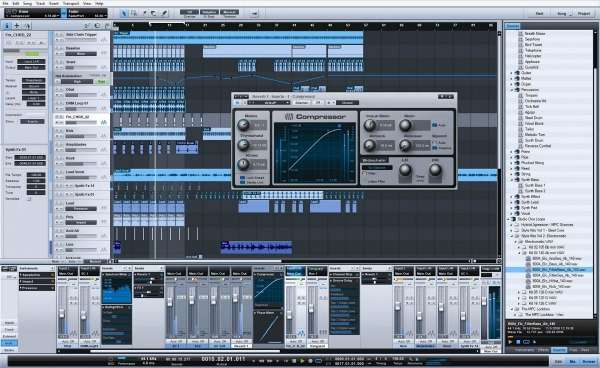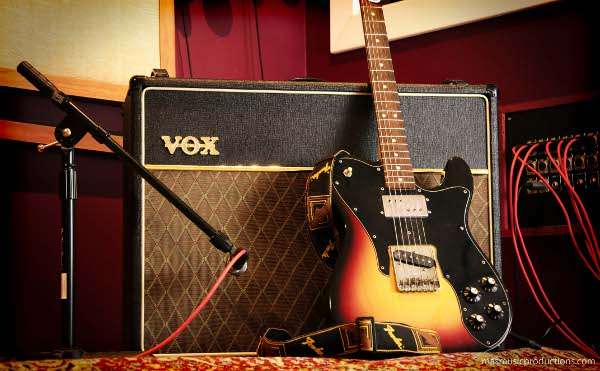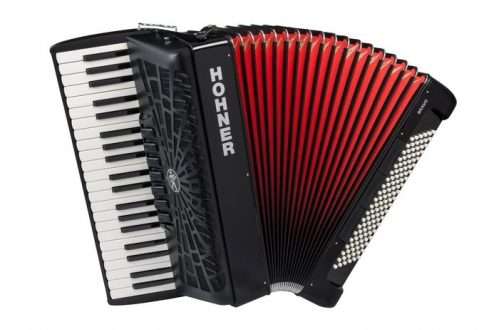
Recording electric guitars
To record electric guitars you need a guitar, cable, amplifier and interesting ideas. Is it just that? Not really, other things are needed depending on the recording method you choose. Sometimes you can even omit the amplifier, more on that in a moment.
Guitar connected to a computer
The electric guitar, as the name suggests, is an electrified instrument, so it sends a signal from the pickups, which it transmits to the amplifying device. Is the amplifying device always an amplifier? Not necessarily. Of course, you won’t get good sound by connecting an electric guitar to any computer. Special software is also needed. Without amplifier replacement software, the guitar signal will actually be amplified, but it will be of very poor quality. The DAW itself is not enough, because it does not process the signal in the way it is needed to get the sound (except for DAW programs with an electric guitar processor).

Suppose we already have a program dedicated to the electric guitar. We can start recording, but there is another problem. We have to connect the guitar to the computer somehow. Most of the sound cards built into computers are not of the high quality needed for an electric guitar sound. Latency, i.e. signal delay, can also turn out to be troublesome. Latency may be too high. The solution to these problems is the audio interface that acts like an external sound card. It is connected to a computer, and then an electric guitar. It’s worth looking for audio interfaces that come with dedicated software for electric guitars that replace the amplifier.
Multi-effects and effects will also work better with the interface than when plugged directly into a computer. By using the multi-effects and the audio interface at the same time, you can even resign from guitar software and record with good results in a DAW program (also the one not equipped with an electric guitar processor). We can also use an amplifier for this type of recording. We lead the cable from the “line out” of the amplifier to the audio interface and we can enjoy the possibilities of our stove. However, many musicians consider recording without a microphone as artificial, so the more traditional method cannot be ignored.

Guitar recorded with a microphone
Here you will need an amplifier, because that’s what we are going to microphone. The easiest way to connect a microphone to a computer is through an audio interface with line in and / or XLR inputs. As I wrote earlier, also in this case we will avoid too high latency and loss of sound quality thanks to the interface. It is also necessary to select the microphone with which we will make recordings. Dynamic microphones are most often used for electric guitars due to the high sound pressure generated by amplifiers. Dynamic microphones can handle them better. They slightly warm up the sound of the electric guitar, which is beneficial in its case. The second type of microphones we can use are condenser microphones. These require phantom power, which many audio interfaces are equipped with. They reproduce the sound without color, almost crystal clear. They cannot stand high sound pressure well, so are only suitable for recording an electric guitar softly. They are also more affectionate. Another aspect is the size of the microphone diaphragm. The bigger it is, the rounder the sound, the smaller it is, the faster the attack and the greater the susceptibility to high notes. The size of the diaphragm is generally a matter of taste.

Next, we’ll look at the directionality of the microphones. For electric guitars, unidirectional microphones are most often used, because you do not need to collect sounds from several sources, but from one stationary source, i.e. the amplifier’s speaker. The microphone can be positioned relative to the amplifier in many ways. These include, for example, the microphone at the center of the loudspeaker, as well as at the edge of the loudspeaker. The distance between the microphone and the amplifier also matters, as this factor also affects the sound. It is worth experimenting, because the acoustics of the room in which we are also counts here. Each room is different, so the microphone must be set individually for each room. One way is to move the microphone with one hand (you will need a stand, which will be necessary for recording anyway) around the amplifier, and with the other hand to play open strings on the guitar. This way we’ll find the right sound.

Summation
Recording at home gives us amazing prospects. We can give our music to the world without going to a recording studio. The interest in home recording in the world is high, which bodes well for this method of recording.





